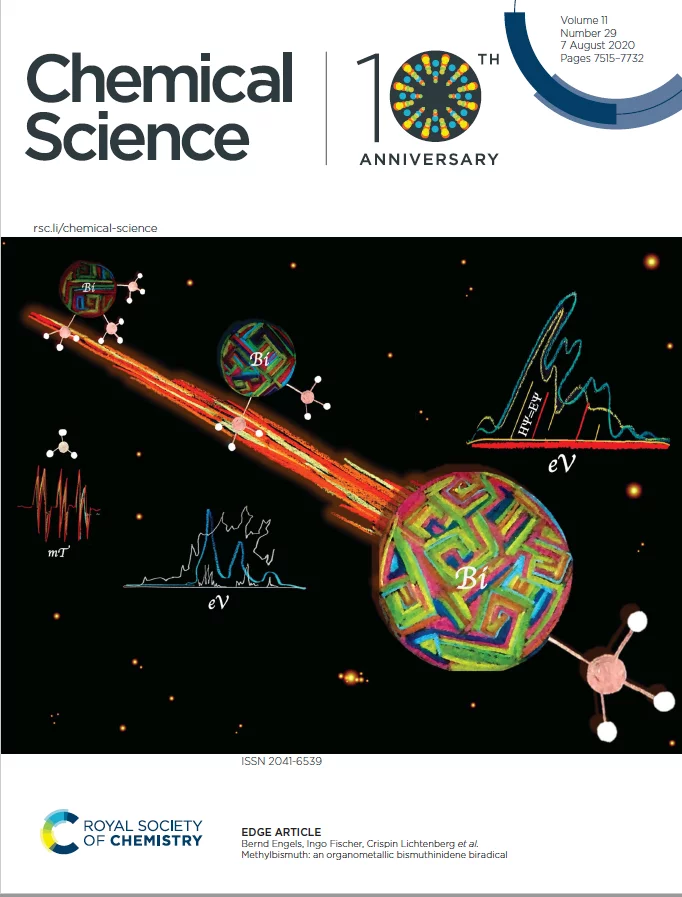So far open-shell bismuth species could only be accessed by stabilization through adduct formation with steric Lewis bases, due to their extremely high reactivity. However, these species are intermediates that govern the reaction mechanism of photophysical applications or catalyzed transfer hydrogenation reactions.
Thus, understanding their reactivity and electronic structure is of fundamental interest. Researchers from the University of Wuerzburg in Germany and the Paul Scherrer Institute could isolate the simplest biradical organometallic bismuth species, for the first time. Here a methyl group (-CH3) is directly attached to the bismuth metal atom, which is called methylbismuth or bismuthinidene, Bi-CH3.
Due to its unpaired electrons, the methylbismuth is highly reactive, its lifetime short and its isolation at ambient conditions fails completely. Thus, Bi-CH3 needs to be prepared in-situ and selectively from trimethylbismuth (Bi(CH3)3) in a free jet expansion. This novel organometallic species was characterized using vacuum ultraviolet synchrotron radiation and photoelectron photoion coincidence spectroscopy at the x04db beamline at SLS. The threshold photoelectron spectrum was measured, and electronic structure was determined, along with Bi-CH3 bond- and ionization energies. The results were augmented by relativistic quantum chemical calculations. More insight about the reactivity of the triplet Bi-CH3 was gained by trapping experiments in solution, which reveal the biradical character of this organometallic compound and the appearance of nascent methyl radicals at mild conditions using electron paramagnetic resonance (EPR) spectroscopy.
The characterization of the electronic structure will help to guide future studies concerning spectroscopic and synthetic applications.
Contact
Dr. Patrick Hemberger
VUV Spectroscopy Group
Paul Scherrer Institut
Telephone: +41 56 310 3236
E-mail: patrick.hemberger@psi.ch
Original Publication
Methylbismuth: an organometallic bismuthinidene biradical
Deb Pratim Mukhopadhyay, Domenik Schleier, Sara Wirsing, Jacqueline Ramler, Dustin Kaiser, Engelbert Reusch, Patrick Hemberger, Tobias Preitschopf, Ivo Krummenacher, Bernd Engels, Ingo Fischer and Crispin Lichtenberg
Chem. Sci., 2020,11, 7562-7568
DOI: 10.1039/D0SC02410D

